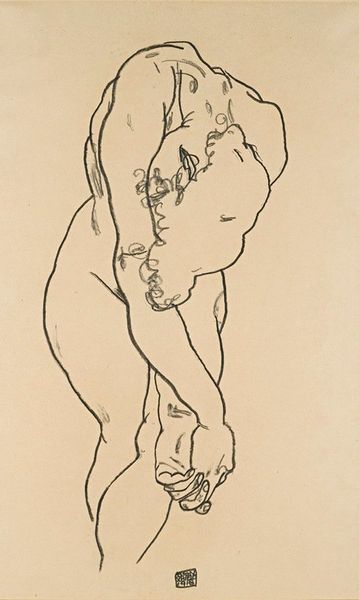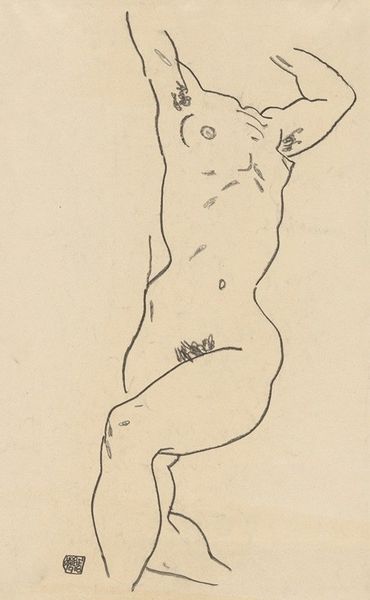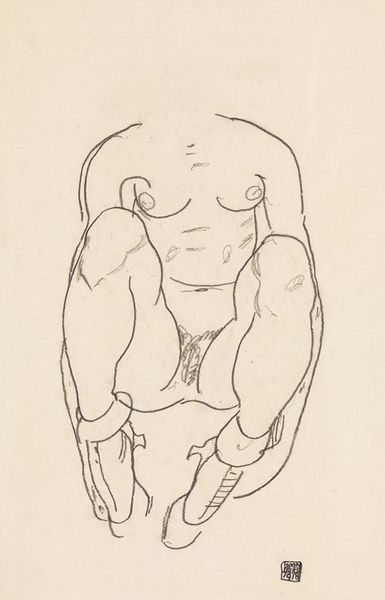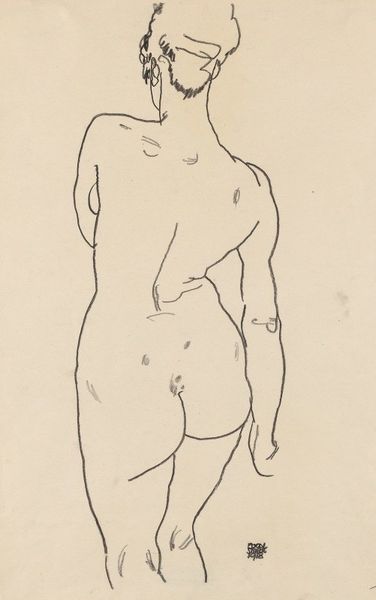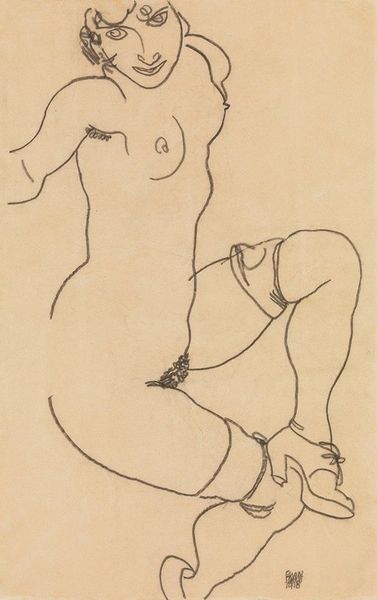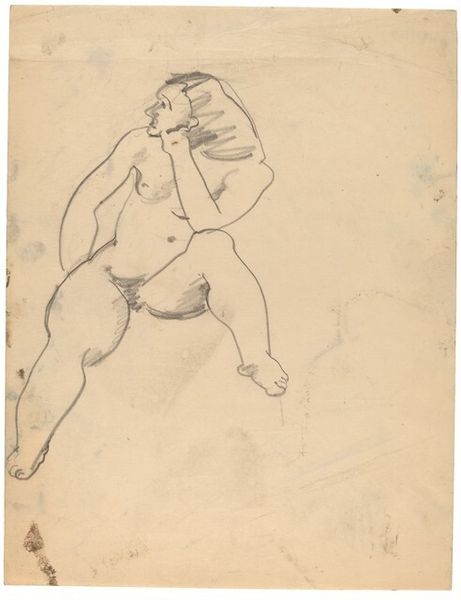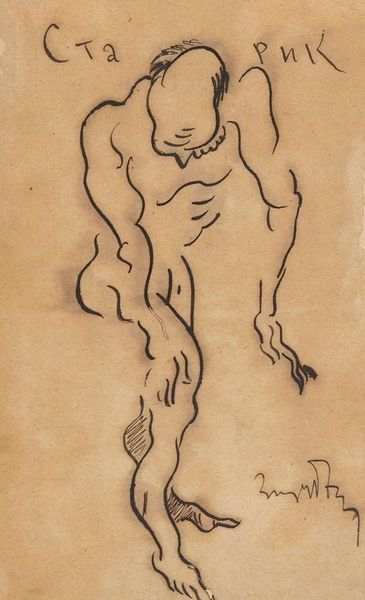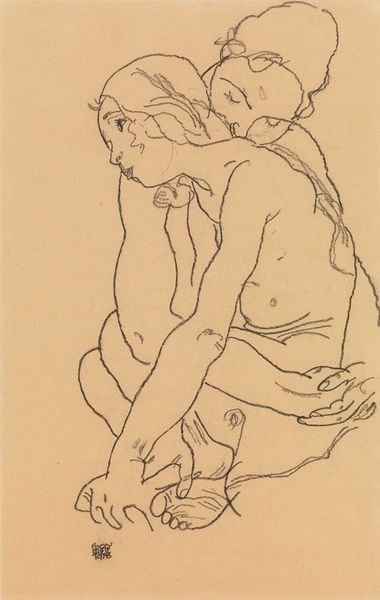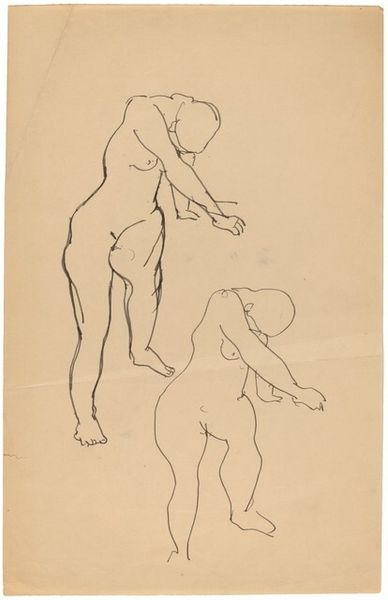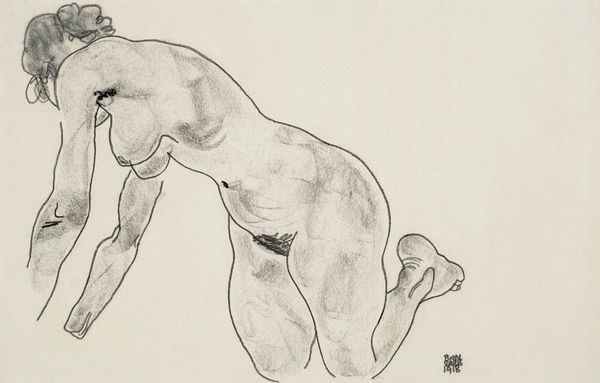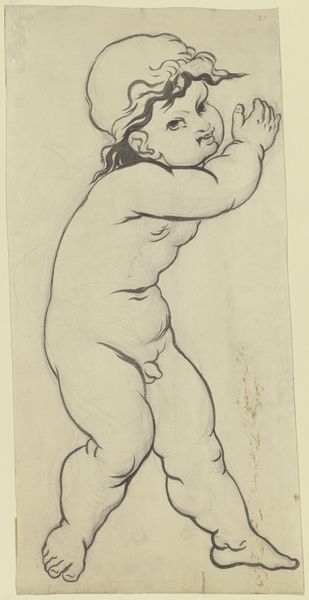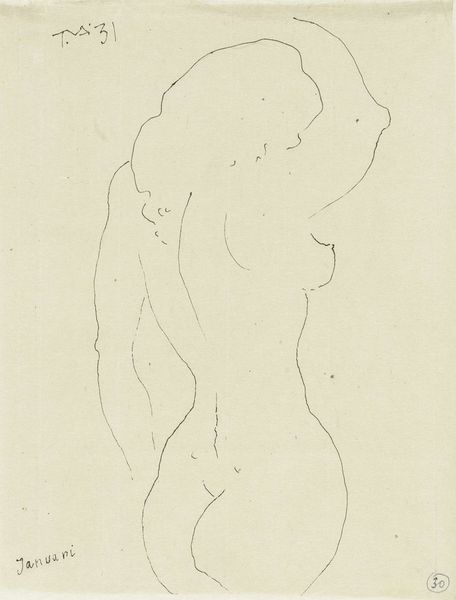
drawing, pencil
#
drawing
#
figuration
#
pencil
#
expressionism
#
nude
Copyright: Public Domain: Artvee
Curator: Today we’re examining “Female Nude Bending to the Left,” a pencil drawing created by Egon Schiele in 1918. Editor: Immediately, there's a vulnerability to this pose, an almost painful compression, accentuated by the stark, linear quality of the drawing. It speaks of fragility. Curator: Precisely. The drawing exhibits Schiele's characteristically jagged lines, building contour and volume with minimal shading. The model's posture—crouched and seemingly recoiling inward—creates an acute angle within the composition, reinforcing that sense of constraint you described. Editor: It makes me think of the social and political turmoil of the time—the final year of the First World War and the immense personal struggles Schiele was facing himself, namely the Spanish Flu which claimed his and his wife's lives. Can we view this contorted form as a representation of societal and personal anguish? Is this physical discomfort mirroring psychological trauma? Curator: While context is always enriching, focus for a moment on the artistic framework. The artist’s style embraces the expressionistic style. Observe how he renders form: a distorted view of the nude, capturing only a fragile figure using precise, sparse pencil strokes. It rejects academic ideals of beauty, favoring emotion. Editor: Of course, the artistic expression is key, but Expressionism itself was, in its way, a form of political commentary, a challenge to the established order, if we reflect upon movements such as the Vienna Secession… I find that context inextricably bound to my interpretation of the subject as burdened. And, to be sure, what does it mean to bend “to the left” politically? Curator: True. Still, to delve into mere allegory reduces the drawing’s sophistication. The figure is positioned firmly, even with an anatomical realism achieved in the rendering of its planes and angles. To ignore this careful line and precision in light of context, well, does the art a disservice. Editor: I see your point about not letting the context overwhelm, and perhaps Schiele intended this nude only as a study of form; but when I look at this work, I see the female body carrying not only the weight of itself, rendered brilliantly by the artist, but the weight of history too. Curator: An interesting perspective, providing more angles of approach for future viewing. Editor: It certainly changes the way one engages with it; what initially struck me as mere suffering can be seen in light of our talk, now, perhaps also as some sense of resistance too.
Comments
No comments
Be the first to comment and join the conversation on the ultimate creative platform.
